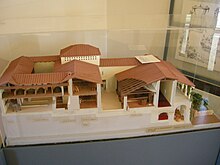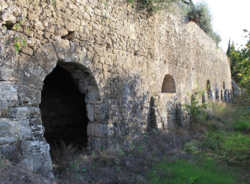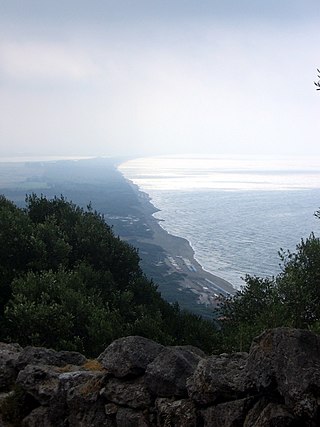
A Roman villa was typically a farmhouse or country house in the territory of the Roman Republic and the Roman Empire, sometimes reaching extravagant proportions.
A latifundium was originally the term used by ancient Romans for great landed estates specialising in agriculture destined for sale: grain, olive oil, or wine. They were characteristic of Magna Graecia and Sicily, Egypt, Northwest Africa and Hispania Baetica. The latifundia were the closest approximation to industrialised agriculture in Antiquity, and their economics depended upon slavery.

Andrea Carandini is an Italian professor of archaeology specialising in ancient Rome. Among his many excavations is the villa of Settefinestre.
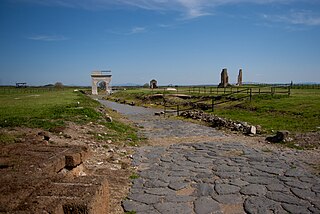
Vulci or Volci was a rich Etruscan city in what is now northern Lazio, central Italy.

The Villa Romana del Casale is a large and elaborate Roman villa or palace located about 3 km from the town of Piazza Armerina, Sicily. Excavations have revealed one of the richest, largest, and most varied collections of Roman mosaics in the world, for which the site has been designated as a UNESCO World Heritage Site. The villa and artwork contained within date to the early 4th century AD.
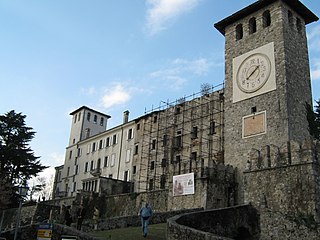
Colloredo di Monte Albano is a comune (municipality) in the Regional decentralization entity of Udine in the Italian region of Friuli-Venezia Giulia, located about 80 kilometres (50 mi) northwest of Trieste and about 14 kilometres (9 mi) northwest of Udine.

Cottanello is a comune (municipality) in the Province of Rieti in the Italian region of Latium, located about 60 kilometres (37 mi) north of Rome and about 15 kilometres (9 mi) west of Rieti.

Santa Marinella is a comune (municipality) in the Metropolitan City of Rome in the Italian region Lazio, located about 60 kilometres (37 mi) northwest of Rome.

Talamone is a town in Tuscany, on the west coast of central Italy, administratively a frazione of the comune of Orbetello, province of Grosseto, in the Tuscan Maremma.

Lucius Sestius Albanianus Quirinalis was an aristocrat of the late Roman Republic. Although having Republican tendencies, Augustus appointed him suffect consul in 23 BC to fill his role.
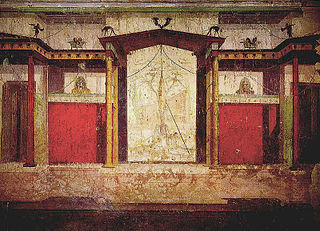
The House of Augustus, or the Domus Augusti, is situated on the Palatine Hill in Rome, Italy. This house has been identified as the primary place of residence for the emperor Augustus.

Grottoes of Catullus is the name given to the ruins of a Roman villa built between the end of the 1st century BC and the beginning of the 1st century AD at the northernmost end of the Sirmione peninsula on the southern shore of Lake Garda.
Giardino is a rural area in Tuscany, central Italy, administratively a frazione of the comune of Capalbio, province of Grosseto. At the time of the 2001 census its population amounted to 15.
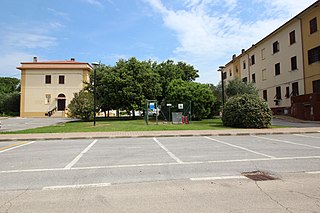
La Torba is a village in Tuscany, central Italy, administratively a frazione of the comune of Capalbio, province of Grosseto. At the time of the 2001 census its population amounted to 209.
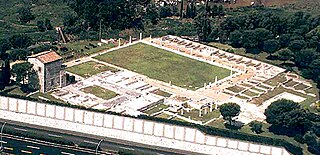
The ancient Roman Villa dei Volusii or Villa dei Volusii-Saturnini is an archaeological site located in the municipality of Fiano Romano, next to the ancient Roman town and sanctuary of Lucus Feroniae, along the route of ancient Via Tiberina.

The Villa of Pliny in Tuscis was a large, elaborate ancient Roman villa-estate that belonged to the Plinys. It is located at Colle Plinio near San Giustino, Umbria, Italy.

The ancient Roman villa of Quintus Axius was a large rural villa rustica in the locality of Grotte di San Nicola, Colli sul Velino, Italy.
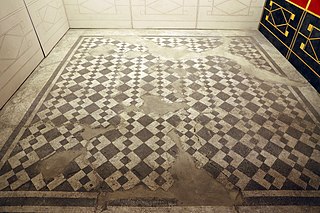
The imperial ancient Roman villa of Ossaia was a large luxurious villa rustica in the rural locality of modern Ossaia, 5 km south of the ancient and modern town of Cortona. It belonged at one time to the family of Augustus, namely his grandsons Gaius Caesar and Lucius Caesar.

Castrum Novum was an ancient Roman town now located in the suburbs of Santa Marinella, to the north of Cape Linaro, Italy. Nearby on Mount Guardiole, 1.5 km from the coast, was an Etruscan settlement.
